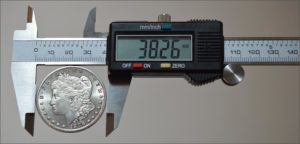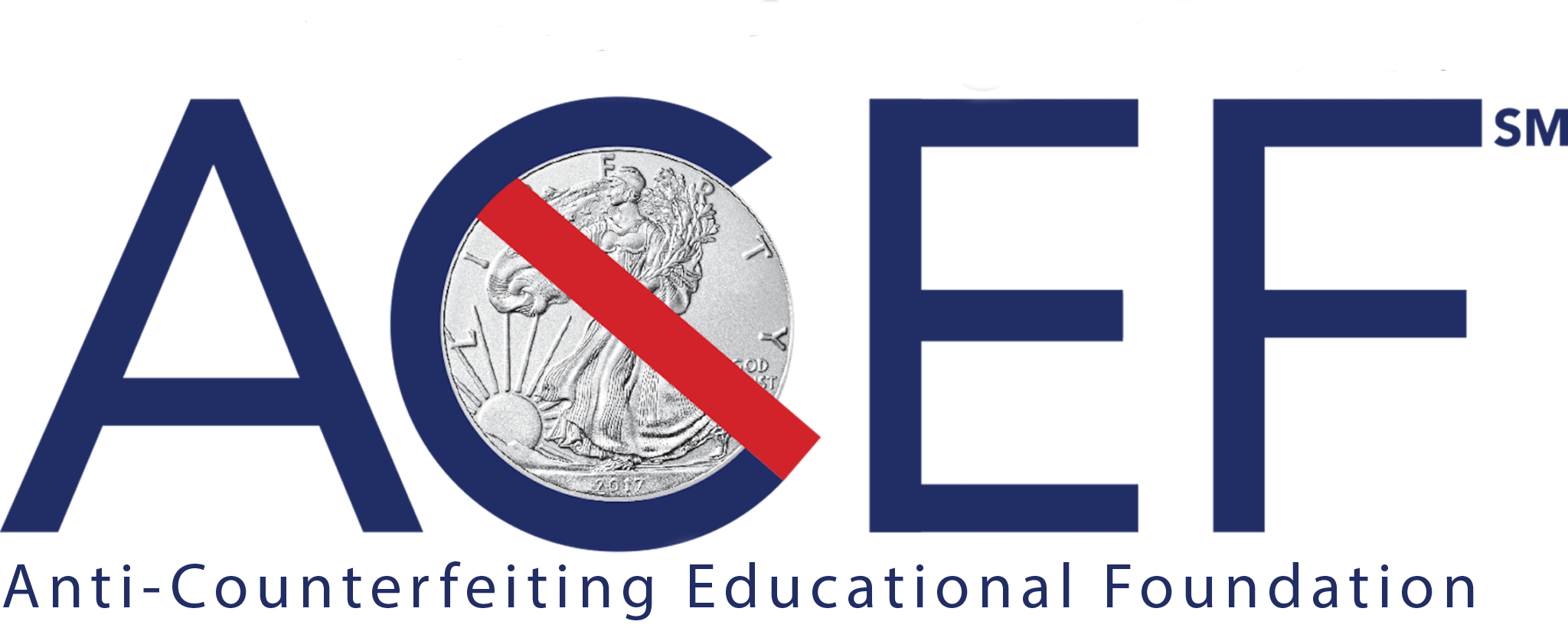The best defense as a smart buyer is a good offense when it comes to protecting yourself from buying fake coins or precious metals bars, regardless of their metal content.
The best protection is to use common sense when purchasing precious metals coins and bars. If the price is too good to be true -- significantly below the current world market price for the precious metal – it’s probably fake.
The best course of action is to purchase your precious metals coins and bars from the issuing Mint or from a reputable dealer. Ask friends or acquaintances for dealer references. Also check industry organizations and government Mints for authorized dealers who make two-way markets in their products. Consider buying from dealers that offer a guarantee that the precious metals products they sell are genuine and who will purchase back the precious metals products when you are ready to sell.
Following are some basic guidelines:
Know about the coins and bars you have.
If you inherited the items you wish to sell, spend some time learning about them and their current values. For example, a complete listing of U.S. coins can be found in A Guide Book of United States Coins also known as “The Red Book,” published annually by Whitman Publishing, LLC. The Red Book is available for purchase online as well as from your local book store. It shows pictures and lists retail values for all U.S. coins. Price guides updated monthly are also available from publications such as Coin World, Numismatic News, and The Numismatist. Also, major third-party grading services such as Numismatic Guaranty Corp and Professional Coin Grading Service publish price guides on their websites. Other sources of pricing, particularly rare coins, are available in the Prices Realized sections of major numismatic auction houses’ websites.
Deal with a trusted seller:
There’s a wise saying in the world of coins. “If you don’t know your coins, know your dealer.” Generally, collectors spend time learning about the coins they collect, including how to value them. Even those who have spent time learning about their coins, seek out trusted dealers.
There are various ways to check on the credentials of the individual or firm from whom you buy coins and precious metals bars. If they claim to be members of hobby or industry organizations, check to see if they are indeed members and that there are no active complaints filed against them. For example, the Professional Numismatist Guild (PNG) requires its members to abide by a strict code of ethics and requires members to submit to binding arbitration to settle any dispute relating to the purchase, sale, or trade of coins or numismatic items. PNG also has a dealer directory at its website, so you can verify whether the person is a PNG member. Other hobby and industry organizations post dealer membership directories at their websites. For local dealers, seek the advice of members of coin clubs in your community or visit coin shows to seek an informal appraisal of the coins you are thinking about selling.
If you are buying online, don’t be fooled by high percentages of “likes” or glowing reviews. Such ratings can be manipulated. Beware of online buyers who offer coins “as is” without any statements of authenticity or commitment to refund your money if the coin you purchase is determined to be fake. Also, beware of those offering to trade gold coins or bars for your collection or the coins you may have inherited, particularly if they ask you to meet them in the parking lot of a big box store to conduct the transaction.
Visual inspection:
The most basic rule of authentication is to know what the real coin or bar looks like. High-quality images of coins or bars are usually available on the internet. Check sources such as the sovereign Mint that struck your coin or the private or sovereign Mint that manufactured your bar. Archives of numismatic auction houses are also important sources of digital images. Check the design details. Compare images of the real coins or bars with the item you have. If a variety or type designation is noted, your coin must match the image exactly. Minute details are important.
Magnet test:
There are many specialized non-destructive tests that can be performed to determine whether your gold and silver items are real. However, you can perform some simple tests with a magnet or other household items.
GOLD -- Gold is not magnetic. Testing requires a stronger than average magnet (the type of strong magnet found at your local, specialized hardware store). If your “gold” coin or bar sticks to your strong magnet it is fake. Counterfeiters know that gold is not magnetic, so they use metals that are not magnetic to avoid detection. Also, counterfeiters use gold plating, which many defeat the magnet test. Thus, the magnetic test should never be the only test performed.
SILVER – Silver is not magnetic. To test for silver, use a neodymium magnet. Tilt your coin or bar 45 degrees, place magnet on the tilted surface. If it slides down, it is real. If it sticks, it is fake. Be aware that counterfeiters use silver plating on coins and the silver plating can defeat the magnet test. Thus, the magnet test should never be the only test performed.
Size:

Digital caliper measures precisely the diameter of a coin. Fake Morgan silver dollar shown measures 38.26mm whereas genuine Morgan would measure 38.1mm.
Manufactures of coins and precious metals bars have very exacting standards and publish (usually at their websites) the specifications of their products, including the metal composition, weight, and diameter.
For older and collectible coins, specifications can be found in standard reference books. For example, a complete listing of U.S. coins can be found in A Guide Book of United States Coins also known as “The Red Book,” published annually by Whitman Publishing, LLC.

Weight:
The manufacturer or sovereign Mint’s stated weight of the coin or bar should match exactly with your item. Use a good-quality, precise scale (preferably digital) to weigh your coin or bar. Most references list the weight of coins in grams.
Ping test:
Gold and silver coins have a distinctive “ring.” Genuine silver and gold coins, when struck gently using a nonabrasive piece of metal, will “chime.” If the sound generated is dull, the coin is fake.
Testing Technology:
There are other, more sophisticated tests to help reduce the risk of buying a fake precious metals coin or bar such as specific gravity and a professional fire assay. Also, there are various technologies such as the Fisch Tester, X-ray fluorescence, ultrasound, precious metals testing scanner (Sigma Metalytics), Dr. Doug’s 1-2-3 Method Testing Kit -- double slide, PAMP VERISCAN (iPhone app for PAMP products), SMI mint mark reader (Sunshine Mint products) and the Royal Canadian Mint’s Cube DNA test for RCM gold bullion coins that are more reliable.
